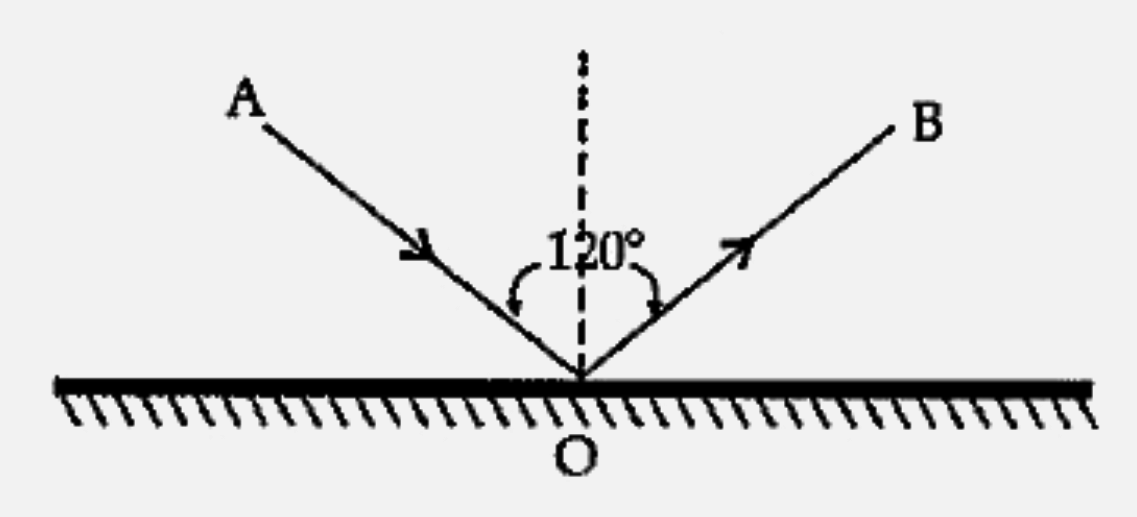The angle between the incident ray and emergent ray, when the ray is passing through an equilateral prism is called angle of _____.
To solve the question, we need to identify the term that describes the angle between the incident ray and the emergent ray when light passes through an equilateral prism. Here’s a step-by-step breakdown:
1. Understanding the Terms:
- The incident ray is the ray of light that strikes the surface of the prism.
- The emergent ray is the ray of light that exits the prism after refraction.
- The term we are looking for describes the angle formed between these two rays.
2. Visualizing the Prism:
- When light enters an equilateral prism, it bends at the surfaces due to refraction.
- The light ray enters the prism at one angle and exits at another, creating an angle between the incoming and outgoing rays.
3. Identifying the Angle:
- The angle formed between the direction of the incident ray (if extended) and the direction of the emergent ray (if extended) is what we need to define.
- This angle is crucial in understanding how light behaves when passing through different mediums.
4. Naming the Angle:
- The angle between the incident ray and the emergent ray is specifically termed the angle of deviation.
- This angle indicates how much the light ray has deviated from its original path due to the prism.
5. Final Answer:
- Therefore, the angle between the incident ray and the emergent ray when the ray is passing through an equilateral prism is called the angle of deviation.
- The incident ray is the ray of light that strikes the surface of the prism.
- The emergent ray is the ray of light that exits the prism after refraction.
- The term we are looking for describes the angle formed between these two rays.
- When light enters an equilateral prism, it bends at the surfaces due to refraction.
- The light ray enters the prism at one angle and exits at another, creating an angle between the incoming and outgoing rays.
- The angle formed between the direction of the incident ray (if extended) and the direction of the emergent ray (if extended) is what we need to define.
- This angle is crucial in understanding how light behaves when passing through different mediums.
- The angle between the incident ray and the emergent ray is specifically termed the angle of deviation.
- This angle indicates how much the light ray has deviated from its original path due to the prism.
- Therefore, the angle between the incident ray and the emergent ray when the ray is passing through an equilateral prism is called the angle of deviation.
Topper's Solved these Questions
- BOOK - ICSECHAPTER - LIGHT ENERGYEXERCISE - EXERCISE-5.4 (Objective Type Questions) B. Statements given below are incorrect. Write the correct statements.5videos
LIGHT ENERGY
- BOOK - ICSECHAPTER - LIGHT ENERGYEXERCISE - EXERCISE-5.4 (Objective Type Questions) C. Write .true.of .false. for the following statements :5videos
LIGHT ENERGY
- BOOK - ICSECHAPTER - LIGHT ENERGYEXERCISE - EXERCISE-5.3 (STUDY QUESTIONS)6videos
LIGHT ENERGY
- BOOK - ICSECHAPTER - HEAT TRANSFER EXERCISE - Picture Study2videos
HEAT TRANSFER
- BOOK - ICSECHAPTER - MATTER EXERCISE - THEME ASSIGNMENT25videos
MATTER
Similar Questions
Knowledge Check
- Question 1 - Select One
The angle between the incident ray and the ray reflected from the plane mirror is 70∘. The angle of incidence will be:
A70∘B30∘C35∘D90∘
Write a relation for the angle of deviation (δ) for a ray of light passing through an equilateral prism in terms of the angle of incidence (i1), angle of emergence (i2) ang angle of prism (A).
View SolutionThe perpendicular distance between the incident ray and the emergent ray in a glass slab is called the ..................... (angle of emergence/lateral displacement).
View SolutionA ray of light falls on a plane mirror. When the mirror is turned, about an axis at right angles to the plane of mirror by 20∘ the angle between the incident ray and new reflected ray is 45∘. The angle between the incident ray and original reflected ray was therefore.
View SolutionIn the figure given the angle between incident ray and the reflected ray is 70∘

Find the angle between the mirror and the incident ray.View SolutionIn the figure given the angle between incident ray and the reflected ray is 70∘

Find the angle of incidence.View SolutionThe diagram below shows a light ray striking and reflecting from a plane mirror AO is the incident ray and OB the reflected ray. The angle between the incident ray and the reflected ray is 120∘.

What is the value of the angle of reflection?View SolutionWrite a relation between the angle of incidence
(i), angle of emergence (e), angle of prism (A) and angle of deviation (d) for a ray of light passing through an equilateral prism.View Solution

